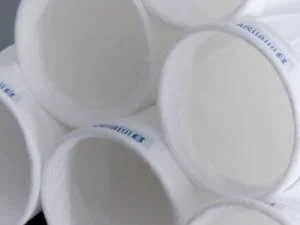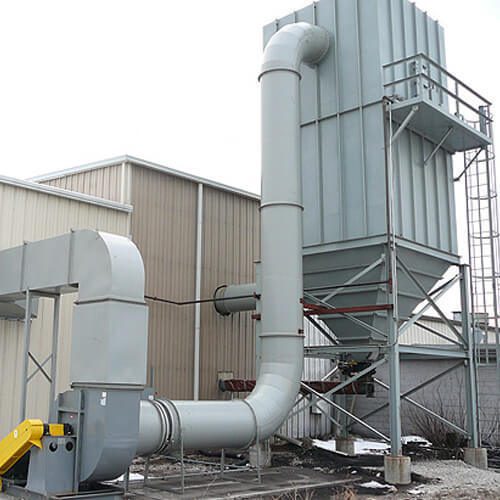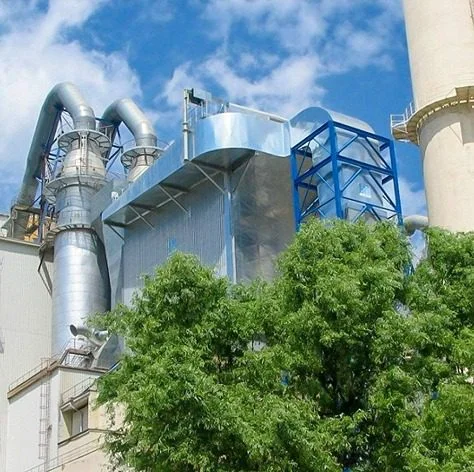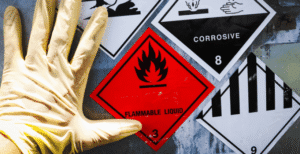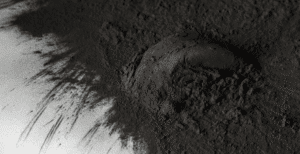The effectiveness of any baghouse filter system hinges on the characteristics of the selected fabric. The fabric functions as more than just a passive barrier; it is the primary mechanism for particle retention, airflow management, and resistance to operational stresses like high temperature, corrosive environments, or abrasive particles. A poorly chosen fabric can lead to frequent maintenance, filter failure, and increased operational costs, while the right fabric ensures longevity, consistent filtration, and compliance with emissions standards. Therefore, making an informed choice in fabric selection is critical to optimizing bag filter system performance and achieving long-term reliability.
Why Fabric Selection Cannot Be Overlooked
Fabric selection is not a one-size-fits-all process. Industrial environments differ drastically in temperature, moisture content, chemical exposure, and particulate properties. Choosing a fabric that’s incompatible with these variables can lead to early filter failure, clogging, reduced efficiency, and even safety hazards like filter rupture or fire. The right fabric, on the other hand, maximizes performance, extends filter life, and ensures regulatory compliance with emission norms.
For example, in high-temperature applications like cement kilns or foundries, fabrics like fiberglass or PTFE-coated media offer excellent thermal resistance. However, these same materials might be too costly or brittle for cooler environments where polyester or polypropylene would suffice. Similarly, chemically aggressive environments demand acid-resistant or alkali-resistant fabrics to avoid degradation. Selecting fabric based on the wrong set of criteria almost always results in higher long-term costs, even if the initial investment appears low.
Factors That Influence Fabric Selection
Choosing the proper fabric requires evaluating multiple variables. These include temperature range, particle size distribution, gas composition, moisture levels, airflow velocity, and pressure drop across the filter. The baghouse design itself—whether it’s reverse air, pulse jet, or shaker type—also determines which fabrics are best suited, since cleaning methods affect how the fabric is stressed.
Moreover, some operations produce sticky, oily, or hygroscopic dust that can quickly blind conventional fabrics. In such scenarios, surface treatments such as membrane laminates (like ePTFE) or calendaring help create smoother surfaces that resist dust penetration and allow for easier cleaning. These performance-enhancing treatments are directly linked to the base fabric chosen, making initial selection even more critical.
Spojte se s námi
Key Fabric Types and Their Characteristics
Polyester (PE): Affordable and commonly used; suitable for dry, ambient-temperature environments.
Polypropylene (PP): Excellent chemical resistance, especially in moist and mildly acidic/alkaline environments.
Aramid (Nomex): High-temperature capability (up to 200–240°C); good abrasion resistance.
- Laminát: Can handle extremely high temperatures (up to 260–300°C); best with PTFE coating for chemical resistance.
P84 (Polyimid): Exceptional thermal and chemical resistance; often used in cement and asphalt plants.
- PTFE (Teflon): Highest resistance to chemical attack and temperatures; suitable for challenging environments but costly.
Acrylic: Good for moderately corrosive environments; often used in coal-fired power plants.
Impact on Filter Performance and Efficiency
The efficiency of a bag filter system is directly related to the filtration characteristics of the chosen fabric. If the fabric has a poor dust cake release property, more frequent cleaning cycles are needed, increasing compressed air consumption and reducing filter life. On the other hand, a fabric with proper permeability, surface energy, and porosity promotes consistent dust cake formation and easy pulse-cleaning, reducing operational stress.
Furthermore, the pressure drop across the fabric is a key factor in system performance. High-resistance fabrics may reduce airflow and increase fan load, while more permeable options reduce energy demands. However, higher permeability should not compromise filtration efficiency. This delicate balance is precisely why fabric selection must be approached thoughtfully.
Maintenance, Longevity, and Cost Implications
Filter bags are consumable components, but with the right fabric selection, their service life can be significantly extended. Durable, properly selected media can last several years with regular cleaning, while inappropriate or poorly matched fabrics might require replacement within months. This difference affects not only the maintenance budget but also downtime, labor requirements, and safety.
In addition, certain fabrics resist moisture and chemical attack better, reducing the risk of corrosion, filter bridging, or microbial growth. This is particularly relevant in food and pharmaceutical applications where hygiene is critical. Investing in the right fabric up front reduces the frequency and cost of replacement and helps maintain regulatory standards.
Objevte naši nabídku řešení:
Environmental and Regulatory Considerations
Many industries operate under strict emission regulations set by local environmental control boards or international guidelines. Non-compliance due to poor filter performance, often rooted in incorrect fabric choice, can lead to fines, shutdowns, and reputational damage. For example, selecting a fabric without proper chemical resistance can result in holes or degradation that allow unfiltered dust to pass through—an unacceptable outcome in regulated environments.
Additionally, fabric selection influences the recyclability or disposal method of used filters. Some fabrics are more environmentally friendly or easier to dispose of than others. These concerns are becoming increasingly important as industries aim for greener operations and more sustainable material usage.
Future Trends in Filter Media Selection
Advancements in nonwoven technology and nanofiber coatings are pushing the boundaries of what filter fabrics can do. Fabrics with embedded nanofibers enhance surface filtration, minimizing dust penetration and extending service intervals. Self-cleaning membranes and smart fabrics that react to temperature or humidity are also in development, potentially transforming how industries approach maintenance and efficiency.
Moreover, digital monitoring tools that track pressure drop, airflow, and particulate concentration can help operators determine if a certain fabric is performing as expected or needs to be upgraded. This allows for a more data-driven approach to fabric selection and management, further emphasizing its critical role.
Závěr
Fabric selection in bag filter systems is more than just a technical detail—it’s a decision that affects the heart of your filtration performance. The right choice ensures operational efficiency, longer filter life, environmental compliance, and lower maintenance costs. As industrial processes become more demanding and regulatory requirements stricter, fabric selection will continue to be a pivotal factor in system design and operation. Choosing wisely today prevents costly mistakes tomorrow and secures the long-term success of your dust collection or filtration strategy.
